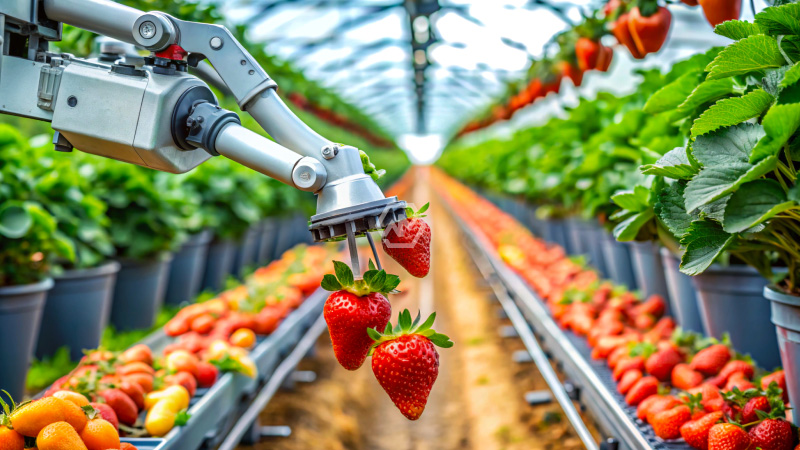- Japan introduces lidar-equipped robots to automate strawberry harvesting.
- High-bed cultivation pairs with automation for enhanced efficiency.
- U.S. farms watch closely, balancing curiosity and fear of disruption.
Japan’s latest leap in agri-tech, led by researchers at Osaka Metropolitan University, has brought strawberry-picking robots to life. These robots use lidar technology to create precise 3D maps of farming terrain, allowing them to navigate high-bed cultivation systems and pick strawberries delicately—without bruising the fruit.
In the U.S., where many farms rely on seasonal labor, the advancement raises critical questions. Could robots eventually replace human pickers across American fields? While the promise of consistency and labor savings is appealing, the high cost of entry, tech training, and cultural resistance may slow adoption.
Robot Harvesters Redefine Farming: A Japanese Tech Wave Hits Global Agriculture
High-bed cultivation, which involves growing strawberries on raised platforms, has helped reduce physical strain for workers, but harvesting remains painstaking. Strawberries bruise easily, and traditional picking methods demand a soft touch and sharp eyes. Enter Japan’s lidar-equipped robot: a system that can not only identify ripe strawberries but harvest them gently and efficiently.
Lidar, or Light Detection and Ranging, allows the robot to “see” in 3D by sending laser pulses to map its surroundings. This is a major upgrade over GPS, which lacks the fine-grain precision required in strawberry fields. The robot’s real-time data processing helps it maneuver tight rows and detect the ripest berries with accuracy that rivals human workers.
American farmers are observing this development with mixed feelings. The U.S. agriculture sector has long grappled with labor shortages, and such technology could provide relief. However, fears about job losses, especially for seasonal workers, linger. There’s also skepticism over the costs and adaptability of these machines across different farm conditions.
If Japan’s innovation proves scalable, it may trigger a domino effect in agricultural automation. As global food demand rises, efficiency and consistency will be key. But embracing this change will require not just new machinery—but new mindsets and policies as well.
Japan’s strawberry-picking robots are more than just a farming upgrade—they represent a shift in how the world feeds itself. Whether welcomed or resisted, automation is on the rise.
“The future is already here — it’s just not very evenly distributed.” — William Gibson



